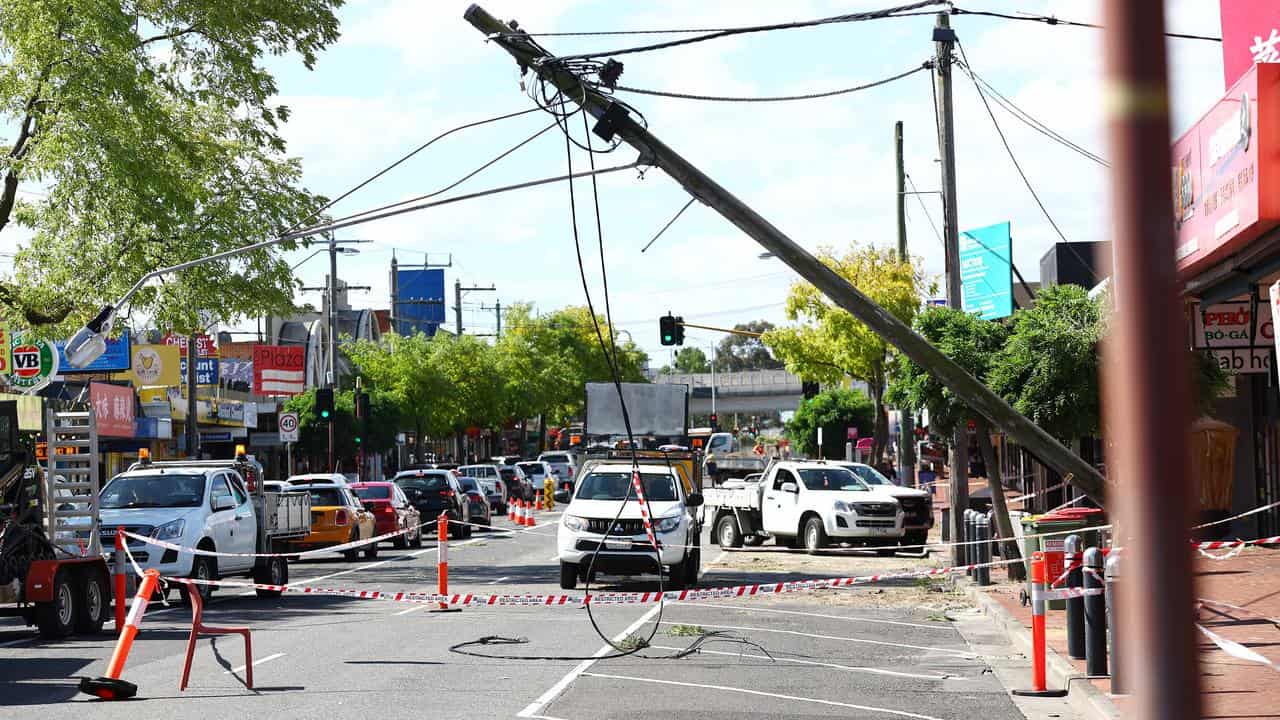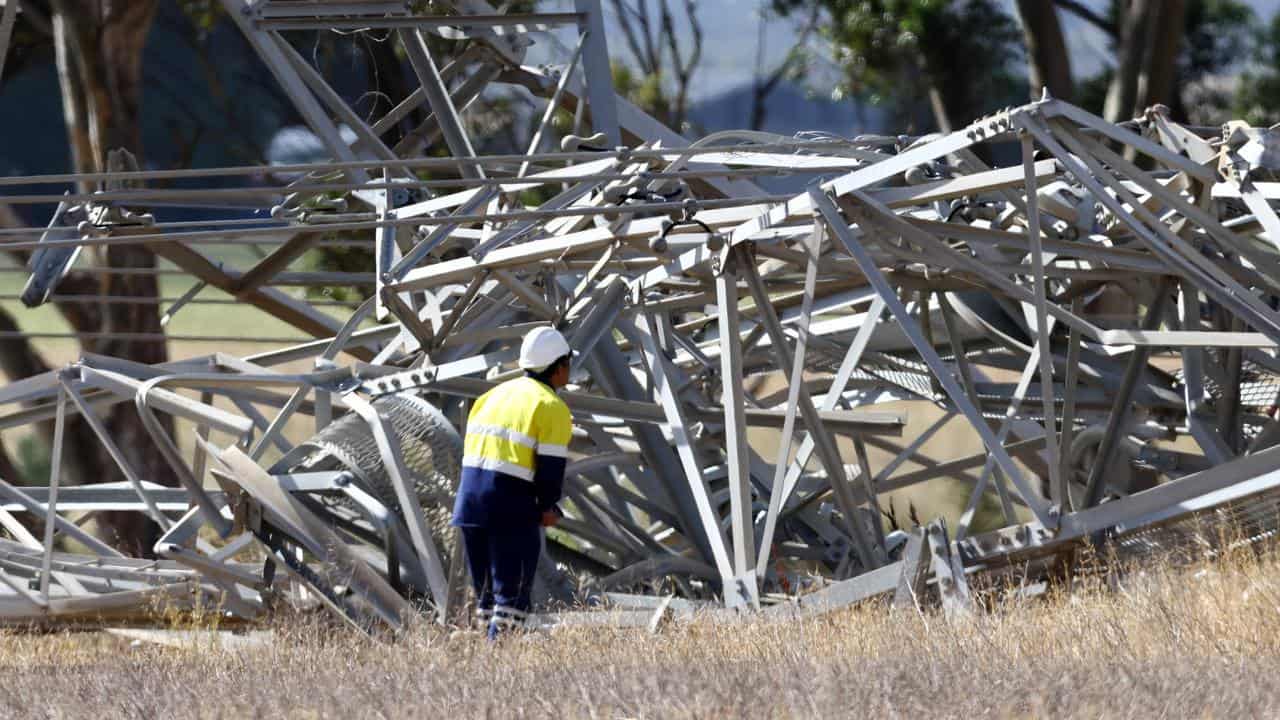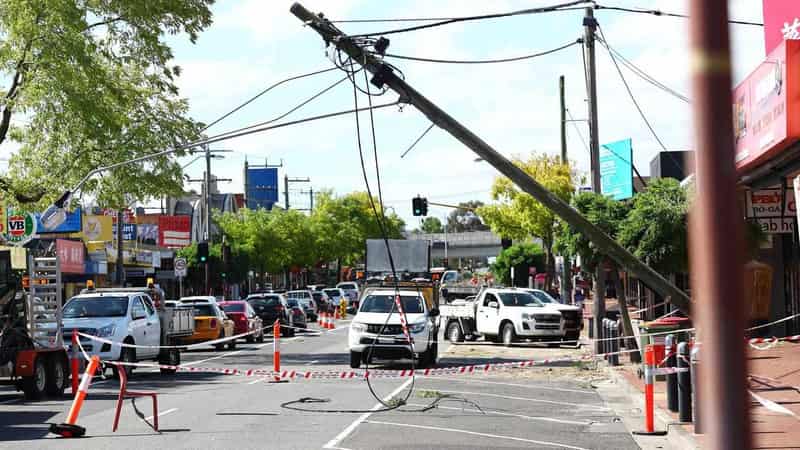
Victoria's destructive storms have rendered more than a dozen homes uninhabitable, while most residents who lost power face the prospect of missing out on compensation.
About 16 houses in the South Gippsland community of Mirboo North were so extensively damaged by Tuesday's wild storms that they can no longer be lived in.
Victorian State Emergency Service boss Tim Wiebusch said that number could grow, with about 80 requests for help in the area still to be dealt with.

"The damage we're seeing here in Mirboo North has been repeated in numerous other parts of the state," he told reporters on Friday.
"This emergency is still far from over. We're still likely to see, for another two days at least, those requests for assistance being cleared.
"We are down from 5000 requests for assistance, almost back to 300 requests for assistance across the state."
A relief centre has been set up in Mirboo North to provide information, electricity generators and satellite internet for residents after the town was completely cut off by the storm damage.
About 24,000 homes and businesses across the state remain disconnected from the electricity network as at 5pm on Friday.
Authorities expect most of the remainder will be reconnected by Saturday.
Payments are being activated for homes and businesses but only if they are without power for at least seven days, Premier Jacinta Allan announced on Friday.
"Our focus has been keenly targeted on those households and communities that will be left without power for longer periods," she said.
The prolonged power outage payments are worth $1920 per week for households and $2927 for businesses.
The waste levy is also being waived for ratepayers in 21 local government areas.
Gippsland South MP Danny O’Brien said Mirboo North residents were facing huge clean-up bills and needed more support than initial hardship and limited outage payments.
"Mirboo North is way beyond anything any one else has seen,” the Nationals MP told reporters in the town.
"There's been a catastrophic event go through here and if you look at the damage it's absolutely as bad as a cyclone you would see in North Queensland."
The storms led to one of the biggest power outages in Victoria's history, with 530,000 properties off the grid at one point.

Collapsed transmission lines caused the Loy Yang A coal-fired power station in the Latrobe Valley to shut down, but authorities insist the widespread outages were caused by local transmission damage.
Ms Allan didn't completely dismiss the idea of moving power lines underground but stressed the resilience of the above-ground network needed to be strengthened.
Energy Safe Victoria has launched an investigation into the factors that contributed to the collapse of six transmission towers, including into provider AusNet.
"We will be investigating AusNet's compliance with its safety obligations, including its inspection and maintenance responsibilities," the regulator said in a statement.
The Victorian communities of Devon North, Kilcunda and Krowera remain without any form of telecommunications which means they may be unable to make triple-zero calls.
Ms Allan said it was reasonable to question if telcos should have more batteries and generators around towers as backup power sources for severe weather events.
The storms have emphasised the need for both levels of government to work with telecommunications companies to find solutions, she added.
The Herald Sun reported leaked internal documents show emergency callers at one point on Tuesday were forced to wait more than a minute for fire services to answer, up to six minutes for police and 23 minutes for the State Emergency Service.
But Emergency Services Minister Jaclyn Symes said those numbers were predictive rather than what eventuated.
"What the data shows is no one waited more than around three minutes for police calls," she told Melbourne radio station 3AW.
Ms Allan said call-takers came under strain despite extra staff being added in anticipation of the catastrophic weather, with SES call-takers experiencing their fourth-busiest day and police call-takers their busiest on record.









